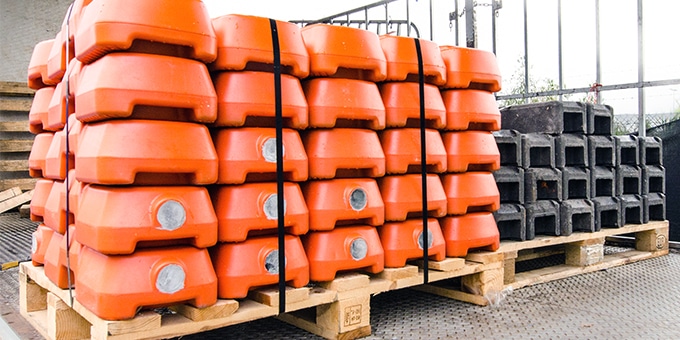When running a construction site, safety and security fencing needs to be at the top of your list of things to consider. Unauthorised entry on your site can leave you and your company liable for any injuries that could occur. An unprotected site also leaves public property open to possible damages, again leaving you or your company liable.
Below we’ve detailed further information and a checklist for ensuring that your construction site is safe and secure.
Temporary Fencing
Yes, temporary fencing is absolutely necessary and a legal requirement in all Australian states. Your fencing should be of a suitable height to deter unwanted entry, hard to climb, low enough to avoid access from underneath, and be able to withstand strong wind gusts. If there is existing boundary fencing on some sides of your construction site that sufficiently restricts access, then this can be used as part of your barrier security.
I’ve seen quite a few companies skimp on industry standard temporary fencing and use ply-board instead; this can result in major problems for your construction site. Ply-board does not hold up well in wet and windy weather, it will buckle with rain, weaken and eventually fall over in strong winds, potentially damaging property or even injuring people.
You can rent or buy temporary fencing from many reputable suppliers who will also help to install the fencing correctly. If you’re unsure about quality, do your research; a good provider will be able to give you a very detailed description of how their product is made as well as a guarantee the product against elements.
Who sources and pays for temporary fencing?
Usually, a primary contractor is required when the project value is over $250,000 and they will, therefore, be responsible for sourcing temporary fencing and be paying for it. There are many reputable businesses Australia-wide that lease fencing, or if you could look at buying your own fencing .
Debris and dust barriers
Temporary fencing won’t contain dust and debris so it’s a good idea to install barrier mesh or shade cloth over your fencing. This doubles as privacy for your site and contains debris and dust (especially during excavation). If you’re marketing savvy then you can also look at using printed banner mesh or shade cloth to advertise for your business.
Waste segregation and storage
It’s important to ensure you have a way of containing your waste on your construction site; a clean site ensures the safety of your staff and reduces the risk of workplace injuries. Rubbish cages are a great option for construction sites as they can easily be dismantled and flat packed for storage and future use. Their reusability also makes them a much cheaper option than skip hire.
Clear and adequate signage
Having clear and sufficient signage on a construction site is the responsibility of the primary contractor carrying out works. Even if the project is small, it’s always good practice to ensure that your site has clear and adequate signage. The front of your site should detail the contractor’s name and contact details, including out of hours contact details.
Other relevant safety & warning signs within the site are important as well to ensure the wellbeing of staff.
Checklist
Use this checklist (referenced from Worksafe Tasmania’s Guidance Note GN051) to ensure you’re adhering to good safety practice.
| Criteria for Safety and Security Fencing | Yes | No |
| Is the fencing constructed from suitable, dedicated materials with no holes or gaps? | ||
| Are the fencing panels difficult to climb? | ||
| Is access under or through the fence barricaded – ie no gaps throughout the construction process? | ||
| Is fencing erected on a firm foundation throughout the construction process? | ||
| Is the fencing installed on level ground – ie a lean of less than three degrees out of vertical? | ||
| Is the fence erected in a general straight line within the site boundary? | ||
| If you have temporary fencing, is it erected within the boundaries of the construction site? (If fencing protrudes onto public areas, you need permission from the council.) | ||
| Are electrical turrets external to the installed fence? | ||
| Is fencing stable and able to withstand any anticipated loads to which it will be subjected – including wind loads, persons attempting to scale it, forces caused by people in heavy pedestrian areas or impact forces from vehicles or plant? | ||
| Are adequate support brackets installed – especially if shade cloth, signage or advertisements are installed on any section of the fencing? | ||
| Do fencing gates provide the same level of security as the rest of the fence? (locks and chains should be fitted for added site security and safety) | ||
| Are gates overlapped so they can be locked easily, and are they reasonably level for opening safely? | ||
| Does signage on the fence include relevant information – including 24-hour emergency contact name and telephone numbers? | ||
| Are all fencing panels handled safely and stored in the flat (horizontal) position? | ||
| Is the fence regularly inspected (weekly, dependent on the work and activities are undertaken on site) to ensure it is safe, secure and still fit for purpose? |
Note: Fencing can only be removed from the site when all hazards, including site waste, have been removed.

